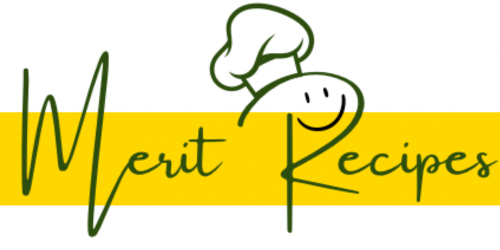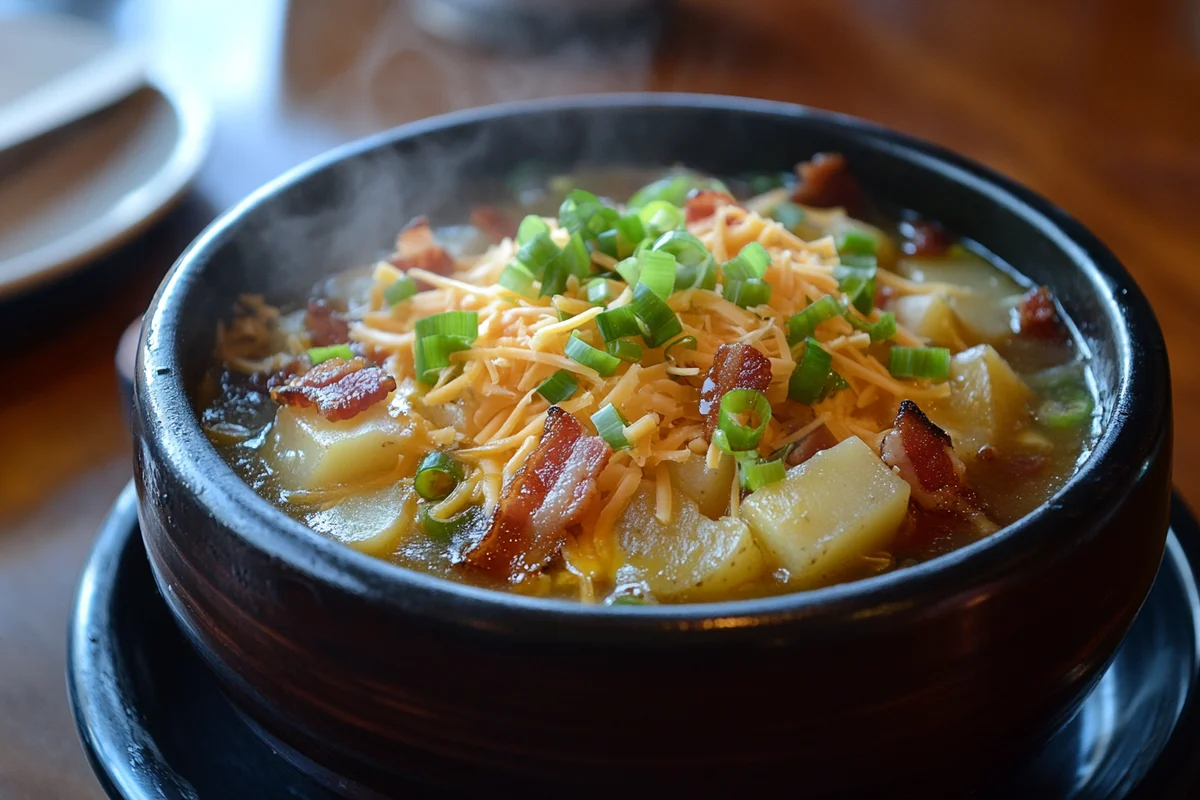Introduction
Potato Soup recipe is a timeless dish that warms both the body and the soul. Indeed, its creamy texture and hearty flavors make it a favorite for family dinners, potlucks, or cozy nights at home. Furthermore, it’s an incredibly versatile meal that you can customize to suit dietary needs and personal tastes without losing its comforting essence.
In this guide, you’ll learn the fundamentals of creating an amazing potato soup recipe from scratch. Additionally, we’ll explore classic ingredients, step-by-step techniques, and creative variations to help you produce the ultimate bowl of comforting potato goodness. Whether you’re a seasoned cook or a total beginner, this article will guide you to success.
Potato Soup Recipe Fundamentals
Before diving into the details, it is important to understand the basics behind a reliable potato soup recipe. Consequently, you’ll find the cooking process smoother and more rewarding.
The Significance of Comfort Food
Comfort food offers more than just nourishment. In many cases, it provides emotional satisfaction. Notably, potato soup ranks high among comfort dishes, thanks to its smooth consistency and mild flavor profile. Moreover, a warm bowl of potato soup can evoke memories of home-cooked meals and shared family traditions.
Because it often uses simple, budget-friendly ingredients, you can easily feed a crowd or whip up a quick meal at a moment’s notice. Nevertheless, despite being quite accessible, the taste and versatility of potato soup remain remarkable.
Key Ingredients Overview
Several core components form the backbone of a classic potato soup recipe:
- Potatoes: Often russet or Yukon Gold, as their starchy or waxy nature can affect texture.
- Onion and Garlic: These aromatics provide savory depth and a subtle sweetness.
- Liquid Base: Typically chicken or vegetable stock, along with dairy for creaminess.
- Seasonings: Salt, pepper, thyme, or other herbs add layers of flavor.
- Fat Source: Butter, olive oil, or bacon drippings create richness.

heartiness. On the other hand, you can keep it purely vegetarian if you prefer. Hence, the flexibility is practically endless
Required Tools and Kitchen Equipmen
A few basic kitchen tools are essential for a well-executed potato soup recipe:
- Stockpot or Dutch oven: A large pot ensures even cooking and reduces spills.
- Cutting board and sharp knife: These help chop vegetables uniformly.
- Measuring cups and spoons: Consistent measurements help maintain flavor balance.
- Blender or immersion blender: You’ll need this for a smooth or partially smooth texture.
- Wooden spoon or spatula: Ideal for stirring without damaging nonstick surfaces.
By keeping these items close at hand, you’ll find your cooking process more streamlined and enjoyable.
Step-by-Step Guide to Crafting the Ultimate Potato Soup
Below is a comprehensive procedure to create a delicious potato soup recipe. In each step, you’ll find guidance for clarity and precision, even if you’re new to the kitchen.
Step 1: Sauté Aromatics
First, warm your stockpot over medium heat. Next, add a tablespoon of butter or oil. As soon as it melts, toss in chopped onions and minced garlic. Stir often. Continue cooking until the onions become translucent. Importantly, this step infuses your soup base with robust flavor right from the start.
Step 2: Add Potatoes and Seasonings
After that, add diced potatoes to the pot. Season them with salt, pepper, and dried herbs like thyme or parsley. By coating the potatoes in the aromatic mixture early on, you ensure they absorb flavor before any liquid enters the picture.
Step 3: Pour in Liquid
Once your potatoes are well-seasoned, pour chicken or vegetable stock over them. The liquid should cover the potatoes by about an inch. Then, bring the soup to a gentle boil. Subsequently, reduce the heat to maintain a simmer. This controlled cooking temperature allows flavors to meld without risk of scorching.
Step 4: Simmer Until Tender
Let the potatoes simmer until you can easily pierce them with a fork. Typically, this takes about 15–20 minutes. In case the liquid level drops too low, add extra stock or water. By cooking the potatoes thoroughly, you achieve a melt-in-your-mouth consistency.
Step 5: Blend to Desired Consistency
Once the potatoes are fully cooked, remove the pot from the heat. At this stage, you can decide how creamy you want your soup. If you prefer a slightly chunky texture, blend only half the mixture with an immersion blender. In contrast, for an ultra-creamy soup, puree the entire batch until smooth.

Step 6: Incorporate Dairy (Optional)
Now, stir in milk, cream, or half-and-half to make your soup extra rich. Because high heat can cause curdling, keep the burner on low. Gently heat the soup until it is warmed through. Be mindful not to let it boil once you add dairy.
Step 7: Adjust Seasoning and Garnish
Finally, taste your soup and adjust seasoning with additional salt, pepper, or herbs if needed. To finish, choose garnishes like crispy bacon bits, shredded cheese, chopped green onions, or fresh parsley. By experimenting with different toppings, you can elevate both flavor and presentation.
Enhancing Your Potato Soup Recipe
Once you’ve mastered the basic version, it’s worth exploring different ways to customize and elevate your soup. Below, you’ll find flavor variations and healthier options that showcase how adaptable this dish can be.
Flavor Variations
- Cheesy Loaded Soup: Stir in sharp cheddar cheese and top with bacon bits for a decadent treat.
- Spicy Twist: Add a small amount of cayenne or sliced jalapeños for gentle heat.
- Herb-Infused: Blend in fresh basil, rosemary, or dill to create aromatic depth.
- Broccoli or Cauliflower Boost: Include small florets during simmering for an extra serving of veggies.
Moreover, experimenting with spices such as smoked paprika or chili flakes can give your soup a distinctive profile. If you desire added protein, try ham, sausage, or shredded chicken.
Healthy Swaps
For those seeking lighter options, consider:
- Low-Fat Dairy: Replace heavy cream with skim milk or unsweetened almond milk.
- Greek Yogurt: Use plain yogurt instead of cream to add tanginess and reduce fat.
- Olive Oil: Substitute butter or bacon drippings with olive oil for a heart-healthier fat source.
- Lean Protein: Opt for turkey bacon or grilled chicken rather than pork bacon.
Indeed, these small adjustments can lower the calorie count and saturated fat while maintaining flavor.
Storing and Reheating
Store leftover potato soup in an airtight container in the refrigerator for up to four days. When reheating, use low heat on the stovetop to preserve the soup’s creamy texture. If the soup becomes too thick, add a splash of milk or stock.
For extended storage, freeze individual portions in freezer-safe containers. Thaw them overnight in the fridge before reheating. Bear in mind that dairy-based soups can separate slightly after freezing, but a gentle stir over low heat typically solves the issue.
FAQ
How do you make creamy potato soup from scratch?
Start by sautéing onions and garlic in butter. Next, add diced potatoes and seasonings, then pour in stock. Simmer until the potatoes are fork-tender. Finally, blend to your preferred consistency and, if desired, stir in milk or cream before serving.
What are the best potatoes to use for potato soup?
In general, russet potatoes are popular for their starchy texture, resulting in a thick, velvety soup. Alternatively, Yukon Golds also work nicely due to their natural buttery flavor. Some cooks combine both types to achieve a balance of creaminess and a slightly firmer bite.
How do you thicken potato soup?
One natural method is to blend a portion of the soup, which uses potato starch for thickness. If it remains too thin, make a slurry of cornstarch and water, then whisk it into the soup. Alternatively, you can mash some of the cooked potatoes or add a small amount of instant mashed potato flakes.
Can you make potato soup without milk or cream?
Certainly. You can replace dairy with additional vegetable or chicken stock for a lighter option. In fact, coconut milk or other plant-based milks can also provide creaminess. Although the flavor profile changes slightly, you’ll still have a comforting potato soup.
Fore more recipes: https://meritrecipes.com/naturally-beef-and-potato-soup/

